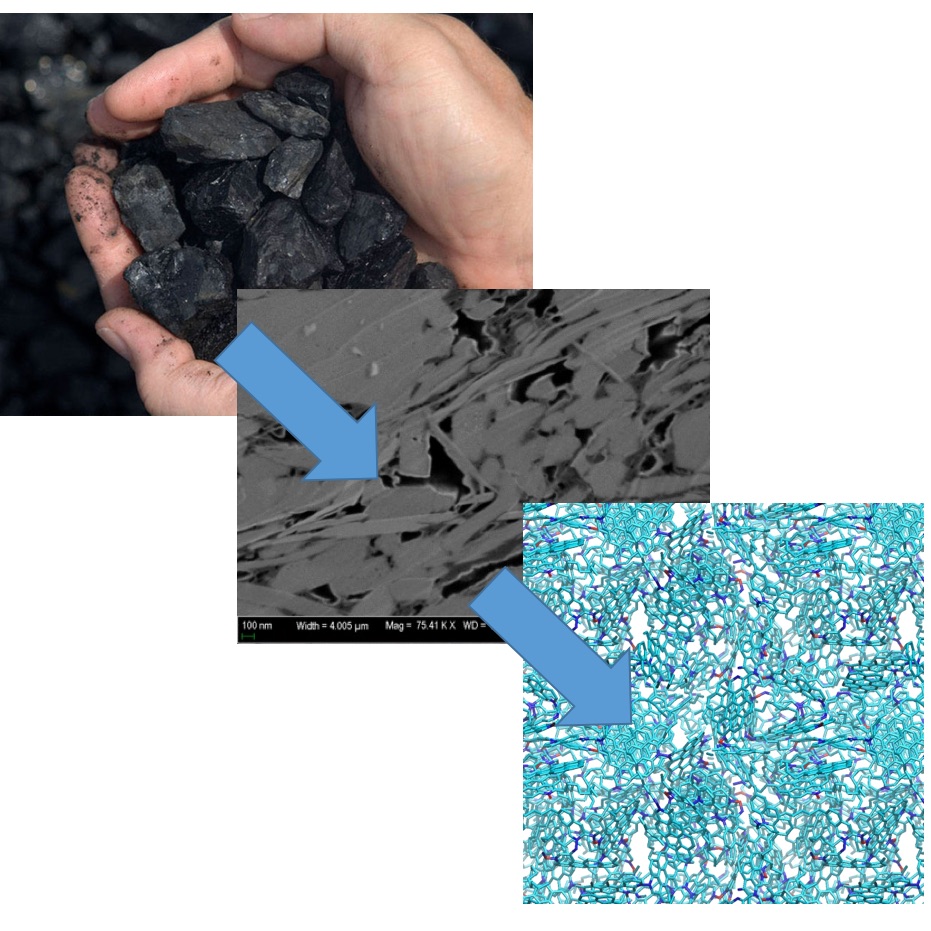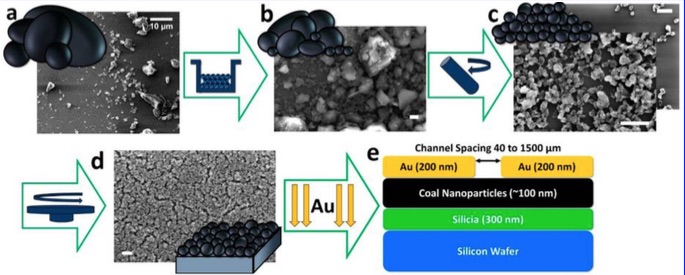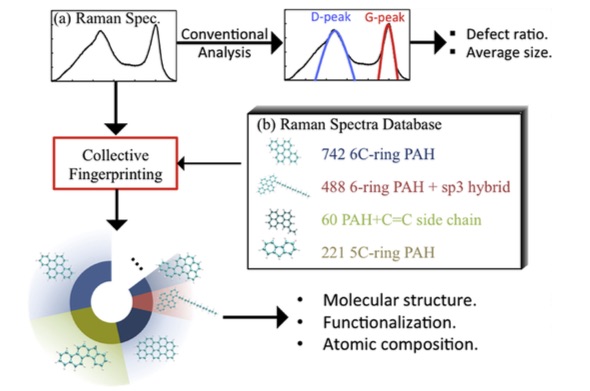
Carbon has long been known as one of the most chemically versatile elements. As a result, carbonaceous materials have been of technological interest for their wide range of electronic properties resulting in materials ranging from low cost conducting materials such as graphite and carbon black, to semiconducting fullerenes and carbon nanotubes, and to insulating diamond and diamond-like carbon. Many are used in electrodes, conductivity additives, and electro- magnetic reflectors, as well leading candidates, respectively for anode materials in lithium ion batteries. Amorphous carbon has also been used in the manufacturing of transistors and photovoltaic devices, and nanostructured graphitic materials (such as graphene and reduced graphene oxide) have gained significant attention for applications including in photovoltaics, transparent conductive mem- branes, and Joule heating devices. In contrast, to the widely studied world of synthetic carbonaceous materials, natural carbonaceous materials are still poorly understood as a potential candidate as an electronic material. Yet, this gap in understanding is worth bridging, particularly given the massive global availability of low cost naturally formed carbonaceous materials (for example, nearly 8 gigatonnes per year of coal is produced globally at ∼0.05 $/kg). Such materials may find uses beyond combustion in many of the applications in which synthetic carbon materials are currently being deployed. Because of the wide array of molecular compounds present in different natural carbonaceous materials (from aromatic to aliphatic, with a varying degree of functional chemistry), these materials could provide a broad range of electrical properties at extremely low cost. In order to unlock the potential of these materials, it is crucial to develop compatible, low cost methods of processing them, a detailed multiscale identifying structural, chemical, morphological, optical, electronic and process parameters that can be used for the fabrication of thin films advanced electronic devices, from Joule heaters to photovoltaic cells and beyond.
Coal Based Electronics

The overall goals of this project are to understand, model, fabricate and characterize passive (such as Joule heaters) and active electronic devices (such as solar photovoltaic cells) based on natural carbonaceous materials (coal, tar, organic shales). Our strategic approach consists in tightly coupled, iterative experiment and computation. We have developed simple processes to obtain electronic grace thin films of natural carbon materials using ball milling, centrifugation, and spin cast on arbitrary substrates. Complementary processed carbonaceous nanomaterials are used to improve charge transport of light absorption. In addition to new understanding of the fundamental electron transport, optical properties, stability, etc. in these devices, and the results from prototype cells and new modeling paradigms for understanding naturally occurring carbonaceous materials, and their future potential use in carbon-based solar photovoltaics.
B.D. Keller, N. Ferralis, J.C. Grossman, Rethinking Coal: Thin Films of Solution Processed Natural Carbon Nanoparticles for Electronic Devices, Nano Letters 16, 2951 (2016).

The relation between nanostructure and chemical functionality of natural carbonaceous materials remains unclear so far due to the inherent chemical complexity. Here, we develop a genome-inspired collective molecular structure fingerprinting approach, which utilizes ab initio calculations and data mining techniques to extract molecular level chemistry from the Raman spectra of carbonaceous materials. We illustrate the power of such an approach by identifying representative molecular fingerprints in natural carbon, for which the molecular chemistry is to date inaccessible using non-destructive characterization techniques. Stepping forward from individual molecular compound within natural carbon to a complex chemical network, we develop a bottom-up construction scheme to generate microscopic assemblies given a group of fragments/bridges, their proportions, and anchor types. Multi-scale simulations are implemented to predict light absorption, charge separation/recombination, and carrier transport, which opens an opportunity to identify and design suitable natural carbonaceous materials as active material for opto-electronic devices such as solar cells.
Liu, N. Ferralis, L.T. Bryndzia, J.C. Grossman, Genome-inspired molecular identification in organic matter via Raman spectroscopy. Carbon101, 361-367 (2016)